Aqara Zigbee Hubs and Their Differences (U: 28/02/25)
When I first started this website back in April 2018, the original Aqara hub (now referred to as the M1) didn’t exist, and although Xiaomi hubs that look similar to this Aqara hub had been around for a while, they weren’t HomeKit compatible, at least not officially. Hubs aren’t new of course, as the 1st and 2nd gen Philips Hue Bridges – also Zigbee hubs – have already been around for a few years. Aqara’s first own-brand hub came out in China in August 2018 and has been slowly but surely propagated to other regions, with the UK finally in on the action, gaining a few sensors as well as the Aqara Hub M2 and the Camera Hub G2H, at the same time as other newer Aqara hubs start their steady emergence into the public.
While many people who regularly visit this site along with various social media platforms will be cognizant of Aqara, its hub, child devices, and ecosystem, the reason for this article is to help the growing number of people that are getting into smart homes in general, and Apple Home in particular, who may have been hearing the word ‘Aqara’ (including all of the various ways it’s pronounced) bandied about. They then find themselves waist-high – metaphorically speaking – in all the different options that this system offers, as well as hearing mention of ‘other’ hubs that they can’t as of yet find. This inevitably leads to a lot of confusion, and in many cases, hard-earned money, unwittingly misspent on the wrong devices. Whilst it would take too long to cover all of the differences between each hub, I hope to put newcomers straight on what each one is capable of, what they can and can’t do, as well as save you time on looking for a device that may not actually be designed for the region of the world you live in, if indeed you can find the device you want so badly.
For those that are more familiar with Aqara and the devices that can be used, there’s always the question of what devices are exposed to Apple Home. This was easy when there was only one Aqara hub, but when it comes to certification for exposing devices to Apple Home, even if a sensor or smart plug has been certified to work with Apple Home via one hub, as soon as a new hub comes out, when it comes to these certified child devices going through the new hub, they have to go through the same certification process again, even when the new hub is itself already Apple Home compatible. Inevitably, this can lead to yet more confusion, where an Aqara US smart wall switch is compatible with the Aqara hub but isn’t yet exposed to HomeKit via the hub portion of the Aqara G2H camera, for example. There’s no easy way around this, and certification, even with devices already previously certified, is seemingly a lengthy process.
With this in mind, it’s impossible for me to be able to let you the reader know exactly what is and what isn’t currently exposed to HomeKit (the exception being the original Aqara Hub), as I’d first have to own each device in order to check this (not going to happen…), and it’s entirely possible that no sooner do I leave something off a list, than a week later, it gains Apple Home compatibility. I hope you can appreciate this limitation I have to put on myself, but with help from other Aqara users, maybe we can amongst us confirm all of the devices across all of the hubs, in order to know for certain.
Some will read this article and be familiar with the parts I touch upon already, so in many ways, this is more for the beginner, confused about the variety of options out there. You can also check out the video below, which merely scratches the surface with the differences between some of the more common hubs, if that’s an easier way to start off.
I will include a hub that isn’t part of the Aqara ecosystem, only so as to explain its relationship with the Aqara products, but first off the bat, all except one of the hubs I’ll mention are Aqara branded, with the one non-branded hub still both made by Aqara’s parent company (Lumi United) and also being capable of working with many of the same Aqara sensors and switches that the Aqara hubs work with. One thing to also note is that it is recommended that you buy a hub suitable for your region if at all possible, for the best support, compatibility and usage. Take a deep breath, and jump in…
| Protocol | Child devices | Zigbee 3.0? | Power | regions | Alarm modes | Speaker? | LED light? | Extras | |
|---|---|---|---|---|---|---|---|---|---|
| Aqara Hub | WiFi 2.4GHz | 32 | No | Built-in plug | CN / EU / US / HK | Away / Off | Yes | Yes | - |
| Aqara M1S/M1S Gen 2 | WiFi 2.4GHz | 128 128 (w/ repeaters) | Yes | Built-in plug | CN / EU / US | Away / Home / Sleep / Off | Yes | Yes | - |
| Aqara M2/M2 PoE | WiFi 2.4GHz / Ethernet | 128 128 (w/ repeaters) | Yes | USB | CN / EU / US | Away / Home / Sleep / Off | Yes | No | IR transmitter |
| Aqara P3 | WiFi 2.4GHz | unknown | Yes | Built-in plug | CN | Away / Home / Sleep / Off | Yes | No | IR Transmitter |
| Aqara G2H | WiFi 2.4GHz | 64 | Yes | USB | CN / EU / US | n/a | Yes | No | Camera |
| Aqara G2H Pro | WiFi 2.4GHz | 128 128 (w/ repeaters) | Yes | USB | CN / EU / US | Away / Home / Sleep / Off | Yes | No | Camera |
| Aqara E1 | WiFi 2.4GHz | 128 128 (w/ repeaters) | Yes | USB | CN / EU / US | Away / Home / Sleep / Off | No | No | Built-in WiFi repeater |
| Aqara G3 | WiFi 2.4/5GHz | 128 128 (w/ repeaters) | Yes | USB-C | CN / EU / US | Away / Home / Sleep / Off | Yes | Yes | Pan & Tilt, Facial, Gesture recognition |
| Aqara Hub M3 | WiFi 2.4/5GHz / Ethernet / PoE | 127 128 (w/ repeaters) | Yes | USB-C / PoE | CN / EU / US / RoW | Away / Home / Sleep / Off | Yes | No | Matter Controller/TBR/AC Controller |
| Aqara Panel Hub S1 Plus | WiFi 2.4/5GHz | 60 | Yes | Switch wires / USB-C | CN / EU | Away / Home / Sleep / Off | Yes | No | Display panel/stream cameras |
| Aqara Camera Hub G5 Pro | WiFi 2.4/5GHz / Ethernet / PoE | 128 (w/ repeaters) | Yes | USB-C / PoE | CN / EU / US / RoW | Away / Home / Sleep / Off | Yes | Yes (floodlight) | Matter Controller/TBR/Outdoor cam |
| Mi Smart Gateway | WiFi 2.4GHz | 128 128 (w/ repeaters) | Yes | USB | All regions | n/a | No | No | Bluetooth/Mesh gateway |
AQARA HUB (M1)
Uses WiFi 2.4 GHz to connect to your network/HomeKit
- Can support up to 32 child devices
- Uses Zigbee to connect to child devices (not Zigbee 3.0)
- Uses a built-in plug
- Available in the following variants, with the appropriate type of plug;
- China (Type I)
- Europe (Type C)
- North America (Type B)
- Hong Kong/U.K. (Type G plug, but not officially on sale in the U.K.)
- Works with Apple Home, Mi Home, and Aqara Home apps
- Two-alarm modes – Off and Away (currently not synced with HomeKit)
- Includes audio speaker (for alarm) and LED ring light
This is the hub that started the ball rolling for Aqara, even though their child devices had been available to buy before this hub existed, which were designed to work with the non-HomeKit Xiaomi – or Mijia/Mi – Hub.
first off, if you find a hub that looks similar to this, but doesn’t have the Aqara logo in the centre, then it’s not the Aqara hub, so don’t waste your money on something that’s not going to be Apple Home compatible. There are two hubs that look vaguely similar to the hub pictured above but are going to have the MI logotype or the Mi ‘Shield’ logo, which comprises stylised versions of the letters M and J.
That aside, what’s the deal with the Aqara hub? Well, it’s a hub that uses WiFi to connect to your network, and by extension, connect to your HomeKit home. The Aqara hub comes with a HomeKit QR code, so it can be added to HomeKit directly, although it’s advisable to add it to the Aqara Home app initially. When in HomeKit, the device will be exposed to HomeKit as two ‘services’; a light, which is the LED ring around the centre of the hub, and a security system, which in terms of HomeKit, simply allows the built-in alarm to be armed or disarmed.
To slightly complicate matters, the Aqara hub can be added to either the Aqara Home or Mi Home apps – but not both. Generally, I’d recommend you use the Aqara app, although if you’ve been using Mi Home for a variety of Xiaomi smart home products like fans, air purifiers and Bluetooth sensors, then you may want to keep using Mi Home. either way, it’ll be exposed to HomeKit. When you’ve added the device to either app, you can begin to add what are often referred to as ‘child devices’. These are Zigbee devices that need a hub, both to operate and to expose them to HomeKit (in almost all cases with Aqara products). You typically add these devices in the Mi Home or Aqara apps, whereupon you’ll be asked to choose your hub in order to add them. Child devices include a variety of sensors, buttons and switches.
The Aqara hub is capable of supporting up to 32 child devices and uses an older version of the Zigbee protocol, with Zigbee 3.0 being the latest official build. The hub only supports Zigbee devices, so you can’t add Bluetooth or WiFi devices to it. Many times people have asked if they can add their Xiaomi Bluetooth temperature sensor or a Yeelight bulb to the hub, and it’s a simple ‘No’. They can work together in automations, but the hub is simply not capable of supporting either of these protocols in the manner of a hub.
Whilst the Aqara app only lists its own brand child devices when adding them, many of the equivalent Mi/Mijia Branded sensors, buttons and switches also work with the Aqara hub, which can be seen if you’re using the Mi Home app. If you want to know what Aqara or Mi branded devices the hub currently supports, you can check out our Aqara 101 article HERE although it probably needs an update.
AQARA HUB M1S (Gen 1 & 2)
Uses WiFi 2.4 GHz to connect to your network/HomeKit
- Can support up to 128* child devices
- Uses Zigbee 3.0 to connect to child devices
- Uses a built-in plug
- Available in the following variants, with the appropriate type of plug;
- China (Type I)
- Europe (Type C)
- North America (Type B)
- Works with Apple Home, Mi Home, and Aqara Home apps
- Four alarm modes – Off, Away, Home, Night/Sleep (syncs with HomeKit)
- Includes audio speaker (for alarm) and LED ring light
The Aqara Hub M1S is an upgrade to the current Aqara Hub, and looks identical, save for the newer Aqara logo on the front. Aside from the visual similarities, in many other ways, the M1S is the same as the original but uses Zigbee 3.0, so it can use both the current child devices that use the previous iteration of Zigbee and newer child devices that use Zigbee 3.0 (generally dubbed T1 devices). The LED ring has been slightly upgraded, and the sounds on the hub are also slightly different, including the onboard voice prompts. As with the previous warnings about making sure you buy the Aqara hub, and not a Mi or Mijia hub by mistake, if you intend to buy the M1S, make sure it is the M1S, as it does look nearly identical to the older model, so double-check with the store you buy it from. In HomeKit, the M1S is exposed as a light, an alarm system, and a hub (within the settings of the Home app).
* The gateway can directly connect 32 Zigbee terminal devices. If you need to add more Zigbee sub-devices, you can add Zigbee relay devices to the gateway first, and then add Zigbee terminal devices. Relay devices have expanded functions; After expansion, the gateway can support up to 128 Zigbee sub-devices. Among the Zigbee products branded as Aqara or Mijia, the neutral wire products are ‘relay’ devices, and the battery-powered or non-neutral products are ‘terminal’ devices. Each relay device can be expanded to 16 terminal devices.
AQARA HUB M2 | M2 PoE
Uses WiFi 2.4 GHz or Wired Ethernet to connect to your network/HomeKit
- Can support up to 128* child devices
- Uses Zigbee 3.0 to connect to child devices
- Includes an infrared transmitter to control IR-based devices (not exposed to HomeKit)
- Uses a Micro-USB port in combination with any USB type power supply
- Available in the following variants, with the appropriate type of plug;
- China (Type A)
- Europe (Type C) (no USB adaptor provided)
- North America (no USB adaptor provided)
- Works with Apple Home and Aqara Home apps
- Four alarm modes – Off, Away, Home, Night/Sleep (syncs with HomeKit)
- Includes audio speaker (for alarm)
* The gateway can directly connect 32 Zigbee terminal devices. If you need to add more Zigbee sub-devices, you can add Zigbee relay devices to the gateway first, and then add Zigbee terminal devices. Relay devices have expanded functions; After expansion, the gateway can support up to 128 Zigbee sub-devices. Among the Zigbee products branded as Aqara or Mijia, the neutral wire products are ‘relay’ devices, and the battery-powered or non-neutral products are ‘terminal’ devices. Each relay device can be expanded to 16 terminal devices.
The Aqara M2 was announced in July of 2019 and has taken over a year to finally surface in China, but is now widely available in the UK, EU and US. The M2 is different from the two previously mentioned hubs – design-wise for the most part – although it’s still a Zigbee (3.0) hub. Aside from the design, instead of using a built-in plug for direct connection to a wall socket, the M2 uses USB, with a micro-USB port on the back, where you can use a Micro USB to USB cable, and connect it to a USB power source. This avoids the issue of regional plugs and the need for an adaptor. The M2 also has an ethernet port, so if you prefer a wired connection, and have a free port on your router, then this should provide an even more stable connection. It also supports 2.4GHz WiFi if you don’t have the wired option. In HomeKit, the M2 is exposed as a hub and alarm system.
Also included is an Infrared transmitter, which allows the M2 to act as a replacement for various IR remotes you may have dotted around the house, like ones for TVs, AC units, fans, games consoles etc. The IR transmitter isn’t exposed to HomeKit, as Apple’s smart home platform doesn’t officially support IR units with the exception of devices like the Tado Smart AC Controller V3+ (read our review HERE). However, you can control devices that are using the M2’s IR functionality, with the use of Siri Shortcuts in the Aqara Home app, so it’s the best you’ll get for now. As Aqara buttons, sensors and switches are compatible with both HomeKit and Aqara Home, you can, of course, programme any of these to trigger an IR function previously programmed, so for example, if you had an Aqara/Opple wireless switch, you could programme one of the buttons to trigger a HomeKit bulb, with another triggering a previously created IR function in the Aqara app.
The Aqara M2 also has Bluetooth 5.0, although there’s almost nothing mentioned about this in the literature, so rather than being a hub for Bluetooth devices, it’s more likely it’s only used for initial pairing of certain devices.
AQARA P3 AC COMPANION
Uses WiFi 2.4 GHz to connect to your network/HomeKit
- Can support up to 128* child devices
- Uses Zigbee 3.0 to connect to child devices
- Uses a larger, built-in 16A plug
- Includes an infrared transmitter to control IR-based devices (not exposed to HomeKit, except for AC units)
- Currently only available in China, with Type I, 16A plug
- Works with Apple Home, Mi Home, and Aqara Home apps
- Four alarm modes – Off, Away, Home, Night/Sleep (syncs with HomeKit)
- Includes audio speaker (for alarm)
The Aqara P3 is first and foremost a sort of beefed-up smart plug, that allows you to also control the power to whatever’s plugged into it, although it’s specifically designed for wall-mounted AC units that require more power, using Chinese 16A plugs. These plugs are larger than the ones you typically find on lower-powered devices that come with a Chinese Type I plug. It essentially controls all of the main functions of your AC using a built-in infrared transmitter, to replace your standard AC remote. While HomeKit doesn’t support IR functionality, in the case of the AC, the P3 exposes your unit as a thermostat, so controls like heat, cooling and turning the AC on and off are available directly in HomeKit. Like the M2, the IR transmitter in the P3 can also be programmed to control other devices that use IR remotes, although they’re not exposed to HomeKit. The P3 shows up in HomeKit as a thermostat and a security system, as well as a hub, but only when you click on the settings for a child device using the P3 as a hub.
Just like all the other hubs I’ve mentioned, it uses 2.4GHz WiFi and Zigbee 3.0 for child devices. There are two previous iterations of this device, but only the P3 is officially HomeKit compatible, so be careful if you’re considering buying this device, which, due to the larger and less common Chinese plug, is probably not recommended for use outside of Mainland China.
AQARA CAMERA HUB G2H
Uses WiFi 2.4 GHz to connect to your network/HomeKit
- Can support up to 64* child devices
- Uses Zigbee 3.0 to connect to child devices
- Regional models are supported in the following areas – China, North America, Europe, the UK
- Works with Apple Home and Aqara Home apps
- Includes audio speaker (for alarm, two-way audio)
- Alarm functionality restricted to Aqara Home, not exposed to HomeKit
- Available in White outside of China, and in Red, Blue, Yellow, or White for the Chinese model
* The gateway can directly connect 32 Zigbee terminal devices. If you need to add more Zigbee sub-devices, you can add Zigbee relay devices to the gateway first, and then add Zigbee terminal devices. Relay devices have expanded functions; After expansion, the gateway can support up to 64 Zigbee sub-devices.
The Aqara G2H is a combined HomeKit compatible camera and hub. In fact, the camera is also compatible with HomeKit Secure Video (HSV). The hub is also exposed to HomeKit of course, which in turn allows compatible child devices to be exposed to HomeKit. In HomeKit, the G2H exposes two services – camera and motion sensor. It also appears as a hub, but only if you look into the settings for one of the child devices that connect to it. Furthermore, as a camera can’t be designated as a hub in HomeKit, the G2H’s hub service lists the Motion sensor as the hub in this instance.
While the camera can use HomeKit Secure video, it also has the option to record to an SD card that can be added to the camera, as well as cloud-based recordings via Aqara’s servers. These recording options can only be accessed via the Aqara app, and if you want to make use of them, you need to be signed into the Aqara app, with the camera ‘binded’ to the appropriate server. Under normal circumstances, you should also be signed into the Aqara app to add child devices to the G2H’s hub, although you can manually add devices outside of the Aqara app, with the use of the button on the top of the camera (three presses puts the G2H hub into pairing mode).
You can use a Chinese G2H even if you’re not located in China, but you do need to be signed into the Chinese server in the Aqara app in order to bind the camera fully to make use of the aforementioned additional recording options. This also means that if, for example, you’re in the US, with a Chinese G2H, signed into the China server, you can’t easily add a US Aqara wall switch, so it’s best to get the G2H for your region, for hassle-free service. Like the Aqara M2, the G2H uses a micro USB port for power, so you can use any suitable micro USB to USB cable along with a USB power source to power it.
AQARA CAMERA HUB G2H PRO
Uses WiFi 2.4 GHz to connect to your network/HomeKit
- Can support up to 128* child devices
- Uses Zigbee 3.0 to connect to child devices
- Regional models are supported in the following areas – China, North America, Europe, the UK
- Works with Apple Home and Aqara Home apps
- Includes audio speaker (for alarm, two-way audio)
- Four alarm modes – Off, Away, Home, Night/Sleep (syncs with HomeKit)
- Available in White only
You’d be forgiven for thinking we’d posted the same G2H camera twice in the article, as the G2H Pro is visually identical to the G2H, save for the small LED, that can display different colours that match the mode the hub or camera is in, just like the M2, M1S etc. The G2H only has a blue LED. Whilst the G2H is also a Zigbee 3.0 hub, the Pro model ups the stakes by fully exposing the alarm system to HomeKit.
* The gateway can directly connect 32 Zigbee terminal devices. If you need to add more Zigbee sub-devices, you can add Zigbee relay devices to the gateway first, and then add Zigbee terminal devices. Relay devices have expanded functions; After expansion, the gateway can support up to 128 Zigbee sub-devices.
The Aqara G2H Pro, like the previous model, is a combined HomeKit compatible camera and hub. The camera is compatible with HomeKit Secure Video (HSV). The hub is also exposed to HomeKit of course, which in turn allows compatible child devices to be exposed to HomeKit. In HomeKit, the G2H exposes three services – camera, alarm system and motion sensor. It also appears as a hub, but only if you look into the settings for one of the child devices that connect to it. Furthermore, as a camera can’t be designated as a hub in HomeKit, the G2H’s hub service lists the Motion sensor as the hub in this instance.
The camera part of the G2H Pro also features a few extras, including the ability to block out certain areas in the camera’s field of view, so instead of footage, there will be a black section, or sections, depending on what parts you have blanked out.
AQARA E1 USB STICK HUB
Uses WiFi 2.4 GHz to connect to your network/HomeKit
- Can support up to 128 child devices
- Uses Zigbee 3.0 to connect to child devices
- Uses a USB-A plug to insert into any suitably powered USB socket.
- Regional models supported in the following areas – China, North America, Europe, UK
- Works with Apple Home, Aqara Home and Mi Home apps
- Contains a WiFi repeater (support for only two WiFi devices)
- Four alarm modes – Off, Away, Home, Night/Sleep (syncs with HomeKit)
- No audio speaker
The Aqara E1 USB Stick Hub is part of Aqara’s Eco range and is therefore pretty cheap. As with all other newer Aqara hubs, the E1 uses Zigbee 3.0, and despite the lower price and smaller physical footprint, it’s still capable of supporting the new standard of 128 devices, with the help of zigbee repeaters. It also contains a WiFi ‘hotspot’ or repeater, although it can only support 2 separate WiFi devices, so it’s fairly limited. It exposes all four alarm modes within HomeKit, and it will sync with other Aqara hubs with the four alarm modes exposed to HomeKit.
AQARA G3 CAMERA HUB
Uses WiFi 2.4 and 5GHz to connect to your network/HomeKit
- Can support up to 128 child devices
- Uses Zigbee 3.0 to connect to child devices
- Regional models supported in the following areas – China, North America, Europe
- Works with Apple Home and Aqara Home apps
- Includes audio speaker (for alarm, two-way audio)
- Four alarm modes – Off, Away, Home, Night/Sleep (syncs with HomeKit)
- Feature motion tracking for humans and pets
- Utilises facial recognition, gesture recognition, motion detection, and abnormal sound detection
- Has built-in IR blaster
The Aqara G3 is a combined HomeKit compatible camera Zigbee 3.0 hub, and HomeKit alarm system. The camera is also compatible with HomeKit Secure Video (HSV). The hub is also exposed to HomeKit, which in turn allows compatible child devices to be exposed to HomeKit. In HomeKit, the G3 exposes three services – camera, motion sensor and security system. It also appears as a hub, but only if you look into the settings for one of the child devices that connect to it. Furthermore, as a camera isn’t designated as a hub in HomeKit, the G3’s hub service is listed as the Security system in this instance.
While the camera can use HomeKit Secure video, it also has the option to record to an SD card that can be added to the camera, as well as cloud-based recordings via Aqara’s servers. These recording options can only be accessed via the Aqara app, and if you want to make use of them, you need to be signed into the Aqara app, with the camera ‘binded’ to the appropriate server. Under normal circumstances, you should also be signed into the Aqara app to add child devices to the G3’s hub, although you can manually add devices outside of the Aqara app, with the use of the button on the top of the camera (three presses puts the G3 hub into pairing mode).
You can use a Chinese G3 even if you’re not located in China, but you do need to be signed into the Chinese server in the Aqara app in order to bind the camera fully to make use of the aforementioned additional recording options. This also means that if, for example, you’re in the US, with a Chinese G3, signed into the China server, you can’t easily add a US Aqara wall switch, so it’s best to get the G3 for your region, for hassle-free service. The G3 is now available outside of Mainland China, having been released in the U.S., Canada and France, with other territories to follow later. Unlike the G2H, the G3 uses a USB-C port for power, so you can use any suitable USB-C to USB A cable along with a USB power source to power it.
In addition to the G3’s basic functionality as a camera with a motion sensor, it also has all four alarm modes exposed to HomeKit, which the G2H does not offer. The G3 records in 2K via an inserted SD card, and can support cards up to 128GB.
Within the Aqara app, the G3 also offers a lot more than the G2H, which includes motion tracking for dogs & cats and humans, with separate functionality for both types. It also has standard motion detection, as well as facial recognition, gesture recognition, and abnormal sound detection. You can also call the account holder of the camera by pressing the LED ring, and the G3 even includes an IR blaster to control devices that use an infrared remote control.
AQARA HUB M3
- Supports Ethernet or WiFi connection
- Has the option to use Power over Ethernet to provide power to the hub
- Can work with Apple Home using either Matter or HomeKit integrations
- Can support up to 127 Zigbee/Thread child devices
- Uses Zigbee 3.0 or Thread to connect to child devices
- Regional models supported in the following areas – China, North America, Europe (RoW)
- Works with Apple Home and Aqara Home apps
- Can work with third-party Matter devices (Thread, WiFi, Bridged)
- Includes audio speaker (for alarm sounds and more)
- Four alarm modes – Off, Away, Home, Night/Sleep (syncs with Apple Home) *
- Can control your AC and expose the controls to Apple Home **
- Has built-in IR blaster
The Aqara Hub M3 differs from all previous Aqara hubs in that it is also a Thread Border Router (TBR), and also a Matter Controller for Aqara’s own ecosystem. It’s still a Zigbee hub, but because of the aforementioned differences, it can work with Matter products not only from Aqara (P2 contact sensor, P2 motion sensor), but from third-party manufacturers too. These can be Matter over Thread, Matter over WiFi or Matter over Bridge. The latter means that if you have a third-party bridge that is also Matter compatible, you can add it to the M3, and then expose the devices connected to said bridge. Philips Hue is a prime example of this, as it’s a Zigbee hub, but is now also Matter compatible. This allows Hue lighting products connected to the Hue Bridge to be exposed to the Aqara ecosystem and be controlled by the app’s automations, or even Aqara’s own switches or wireless buttons. It has a built-in IR blaster that allows you to control third-party devices that use a standard infrared remote control. like the M2, this hub can connect to your network either via WiFi or a wired connection via the ethernet port, but unlike the M2***, the M3 can connect to either 2.4 or 5.0GHz WiFi, and can also be powered via the ethernet port if the connecting device has PoE functionality.
* Exposes the alarm/security system, if added to Apple Home using the HomeKit integration
** Exposes the AC controls to Apple Home if added using the Matter integration
*** A later version of the M2, released in China, does offer PoE
AQARA PANEL HUB S1 PLUS
- Supports 2.4 or 5.0GHz WiFi connection
- Has the option to use Power from light switch wires or via USB-C
- Can work with Apple Home using either Matter or HomeKit integrations
- Can support up to 128 Zigbee child devices (with repeaters)
- Uses Zigbee 3.0 to connect to child devices
- Regional models supported in the following areas – China, Europe (RoW), N.America to follow
- Works with Apple Home and Aqara Home apps
- Can work with third-party Matter devices as long as those devices are connected to the M3 or G5 Pro (Thread, WiFi, Bridged)
- Includes audio speaker (for alarm sounds and more)
- Four alarm modes – Off, Away, Home, Night/Sleep (syncs with Apple Home) *
- Can stream live footage from your Aqara cameras
- Can control other Aqara devices and scenes, as well as HomeKit devices using the six wireless buttons
The Aqara Panel Hub S1 Plus is the European version of the MagicPad Plus, released in China previously. Whilst the European and Chinese models are in many ways identical, there are some key differences, mostly the lack of Aqara’s built-in voice assistant, and three relays for switch in the Chinese model, to two relays for the EU model. Still, it’s a hub, and hence its inclusion.
The S1 Plus has two relays for replacing a single gang double light switch, allowing control of the connected lights from the panel. The panel can also control other devices in the Aqara ecosystem, as long as they’re on the same account and same server/region as the panel itself. This includes smart plugs, other smart switches, smart bulbs and light fittings, LED strips, blind motors, curtain motors, etc. All of the devices you associate with it can then be added to ‘boards’ (up to ten can be created), with tiles for each device. Some devices provide on/off, like a smart plug, but others offer more control, like multicolour LED strips or curtain motors, with a UI to match. It’s most popular feature is to connect to Aqara cameras allowing you to stream the live feed directly on the display.
Whilst the S1 Plus is designed to control Aqara devices, there are six wireless buttons included, that are exposed to Apple Home, allowing you to control HomeKit devices or scenes.
It’s all a Zigbee 3.0 hub for adding Aqara Zigbee devices, and when added to HomeKit, exposes the standard Aqara alarm system. It can also be added to Matter ecosystems as a Matter bridge, and can operate on 2.4 or 5.0GHz WiFi. Aside from being powered by the wires from a light switch fitting, it can be used freestanding, with power provided by a USB-C port on the underside, with the option to also remove the terminal housing, rendering the panel flatter.
AQARA CAMERA HUB G5 PRO (PoE / WIFI)
- Supports 2.4 or 5.0GHz (WiFi model) or wired via Ethernet, with PoE option (PoE model only)
- Can support up to 128 child devices
- Uses Zigbee 3.0 to connect to Aqara child devices
- Uses Thread for Matter over Thread devices (Aqara or Third party)
- Can act as a Aqara Zigbee Hub, Matter Bridge, Matter Controller, Thread Border Router
- Includes onboard eMMC storage (8GB or 32GB depending on purchase method)
- Offers True Colour Night Vision, but no IR night vision
- Has IP65 outdoor rating for use as an outdoor camera
- Regional models supported in the following areas – China, International
- Works with Apple Home and Aqara Home apps
- Hub can be exposed to Matter platforms
- Includes audio speaker (for alarm, two-way audio)
- Four alarm modes – Off, Away, Home, Night/Sleep (syncs with HomeKit)
- Feature AI motion detection for humans and pets
- Utilises facial recognition, gesture recognition, lingering detection, motion detection, and abnormal sound detection
- Built-in 3W floodlight (exposed to Apple Home)
- QHD 1520p recording/streaming.
- Option to use RTSP for recordings
The G5 Pro is Aqara’s first outdoor camera (if you don’t include their G4 video Doorbell), as as such can be used outdoors, offering an IP65 rating. It’s also a Zigbee 3.0 hub for Aqara Zigbee devices, a Matter Bridge for exposing the hub to Matter platforms via Matter, as well as a Thread Border Router and a Matter Controller for the Aqara ecosystem. This Allows it to work with not only Aqara’s own Matter over Thread devices, but third party Matter devices, whether they use Thread, WiFi, or via a Matter Bridge.
It doesn’t offer IR night vision, instead opting for True Colour Night Vision, along with help from a built-in spotlight. The recording quality offers up to 1520p or QHD, which is a bit higher than 2K, and with RTSP, you can record to an NVR or similar.
The G5 Pro is offered in two colours – black or white, and in two formats – either Wifi, connecting to either 2.4 or 5.0GHz bands, or via ethernet, where you can also power the camera via Power over Ethernet (PoE). If you don’t have a router or network switch with PoE functionality, you can still power the camera via USB-C, which is offered on both models.
MI SMART GATEWAY
Uses WiFi 2.4 GHz to connect to your network/HomeKit
- Can support up to 128 child devices
- Uses Zigbee 3.0 to connect to child devices
- Acts as both a Bluetooth hub and Bluetooth Mesh hub for Mijia Bluetooth and Bluetooth Mesh devices
- Uses a Micro-USB port in combination with any USB type power supply
- Available worldwide, with no regional restrictions
- Works with Apple Home and Mi Home apps
- No audio speaker, only a buzzer to confirm certain functions
The Mi Smart Gateway, also known variously as the Mijia Gateway 3, or the Mijia Multimode Smart Gateway, is not an Aqara product, although it’s made by Aqara’s parent company (Lumi United) for Xiaomi. As such, it is not compatible with the Aqara Home app, only Mi Home and of course Apple HomeKit. Like the Aqara M2, this uses a micro USB power connection, which makes using this in different regions easy, with a suitable USB power supply. Unlike all other hubs as part of the larger Xiaomi ecosystem, this is now region-free, so not only should you be able to buy these locally, but if you previously bought a Chinese model, that will now be usable in any region. Unlike the M2, this doesn’t come with an ethernet port, and neither does it have a speaker or LED light, so in this sense, it’s the most basic of hubs. However, it is Zigbee 3.0, and region-free, as already mentioned, so these could be seen as minor plusses compared to the original Aqara hub. Additionally, it can work with both Mi and Aqara branded sensors, although as with all hubs that have come after the original hub, you may find some devices have yet to be certified to be exposed to HomeKit. In HomeKit it doesn’t show up with its own tile, as there are no additional functions, like a light or security alarm, so you can only see the existence of this device in the ‘Hubs and Bridges’ section in the settings for the Home app.
Aside from the Zigbee 3.0 connectivity, the Mi Smart Gateway also acts as a Bluetooth hub for Xiaomi smart home devices that use Bluetooth. HomeKit compatible Bluetooth devices in HomeKit use either a direct connection to your phone or a Home Hub (Apple TV, HomePod/Mini, iPad). In Mi Home, Bluetooth devices also connect directly to your phone, but many Xiaomi smart devices also contain Bluetooth hubs, like some of their cameras, sensors or even ceiling lights. These allow those Bluetooth devices to be accessed remotely, as the devices that contain a Bluetooth hub invariably use WiFi. Not only does the Mi Smart Gateway fulfil this type of function, but it is also designed to work with Bluetooth Mesh devices in the same way. Bluetooth Mesh is similar to Zigbee, in that as you add these mesh devices to your home, the reach of the devices is expanded outward, like an ever-expanding fishing net, with each additional device relaying information back and forth, thereby removing the issue of a Bluetooth (mesh) device being out of range of either your phone or a Bluetooth mesh gateway. Yeelight makes a Bluetooth mesh gateway that also works with Apple HomeKit, but it works exclusively with its own range of Bluetooth mesh lighting products at present. This would be the same for the Mi Smart Gateway, although at present I’m not aware of any Bluetooth mesh devices that are designed to work with the Mi smart Gateway, much less whether they’re exposed to HomeKit. That said, Xiaomi has a series of Bluetooth devices coming out – motion sensor, contact sensor, and smoke sensor – that all use Bluetooth, so it’s possible that these are designed to work with the Mi Smart Gateway and from there (eventually) get exposed to HomeKit. It’s all a bit of an unknown at the moment though.
To wrap things up, as with any area of technology, as things improve, newer models come out, and hubs are not immune to this fact either. Aqara already have more hub-based devices on the way, including a wall outlet based hub, an LCD display wall mounted hub, and even a USB stick hub are all in the making, as was revealed in our post back in September, but that shouldn’t dissuade you from purchasing a hub now, as many of these upcoming ones won’t surface for a while, and even then only initially in Mainland China.
That’s everything I have to say on these different options for now, and I hope it’s of some use for those a bit lost and bewildered at the options out there, but if there’s something I missed, or there are further questions you have, feel free to drop a comment below.

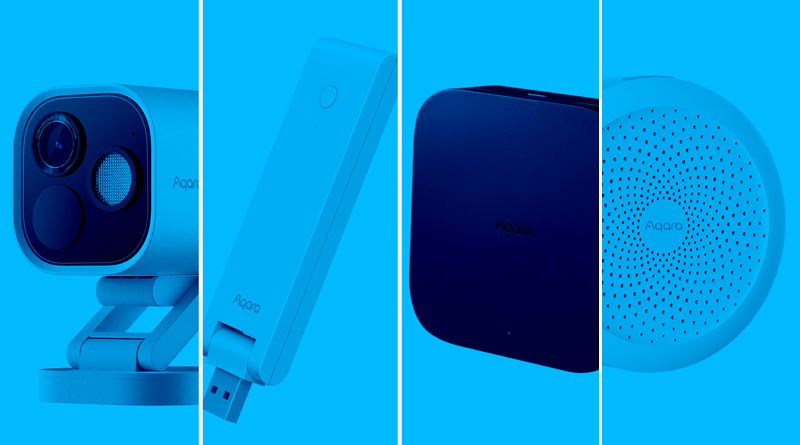
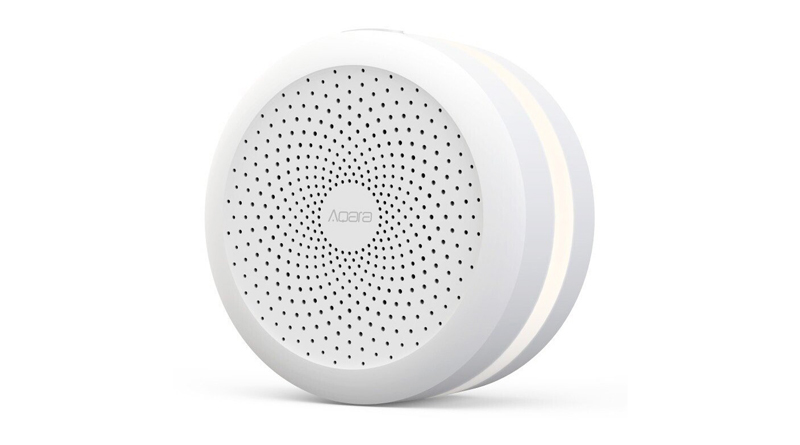
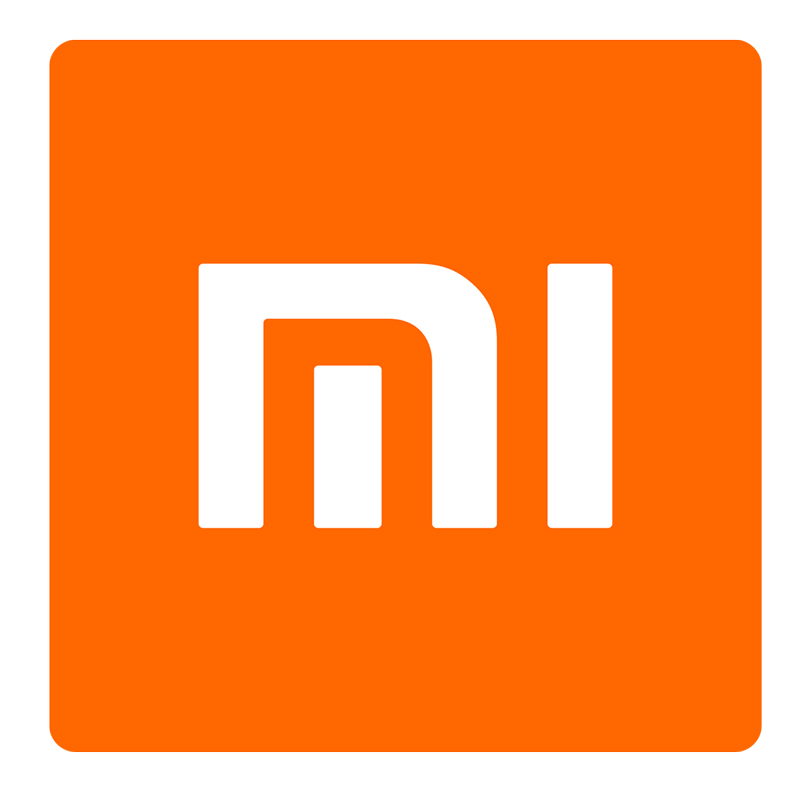

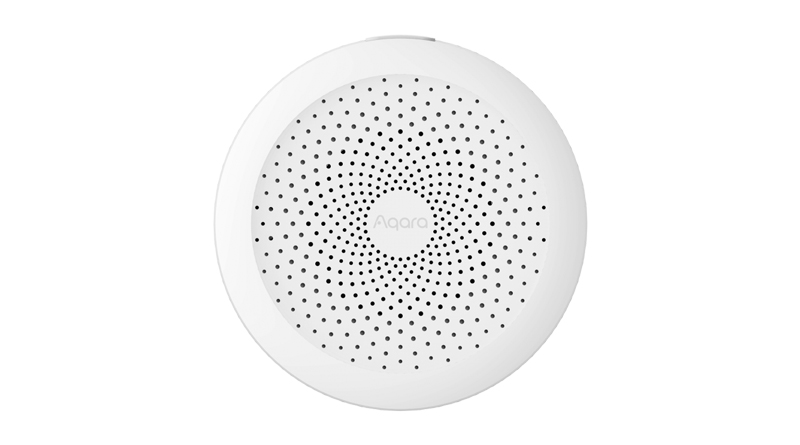

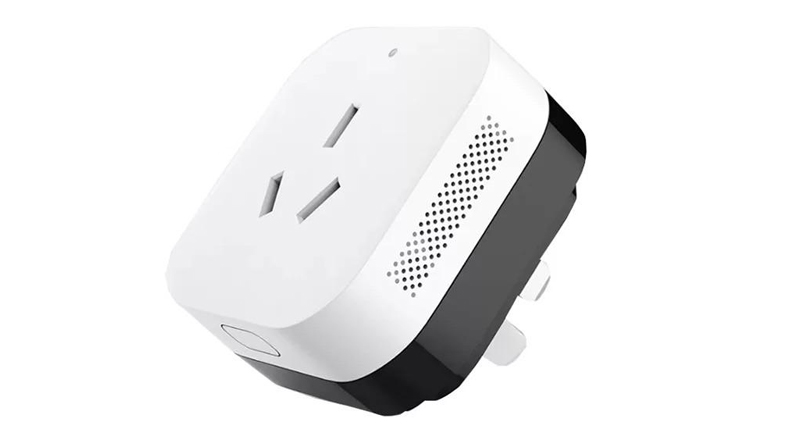
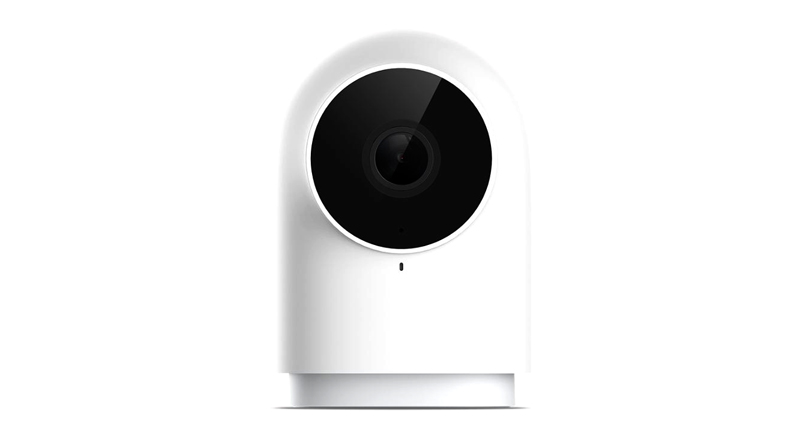
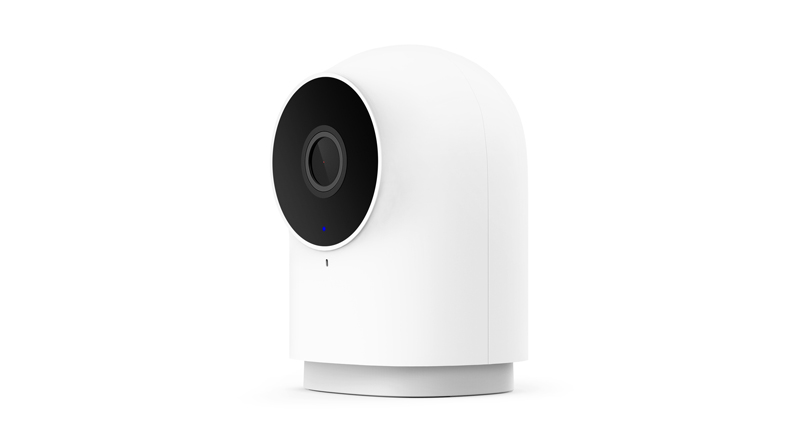
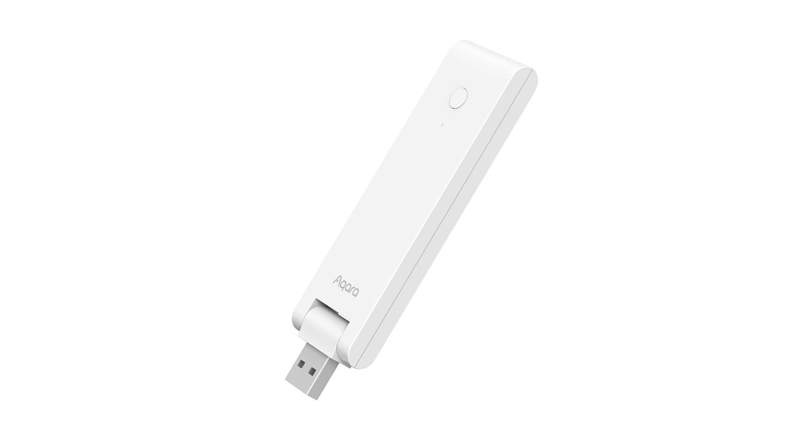
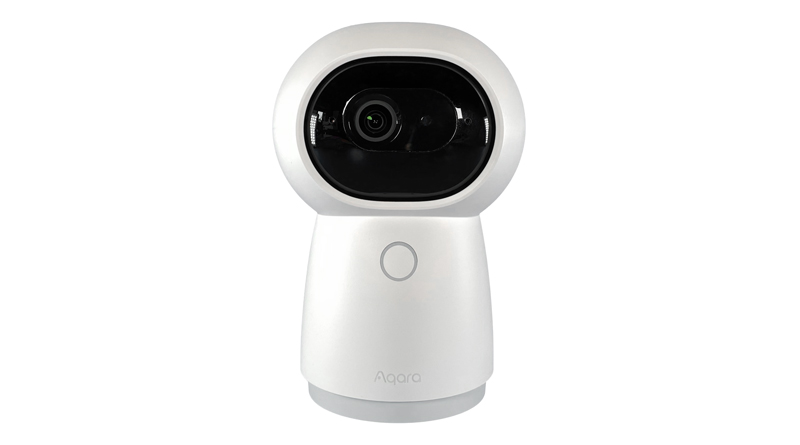
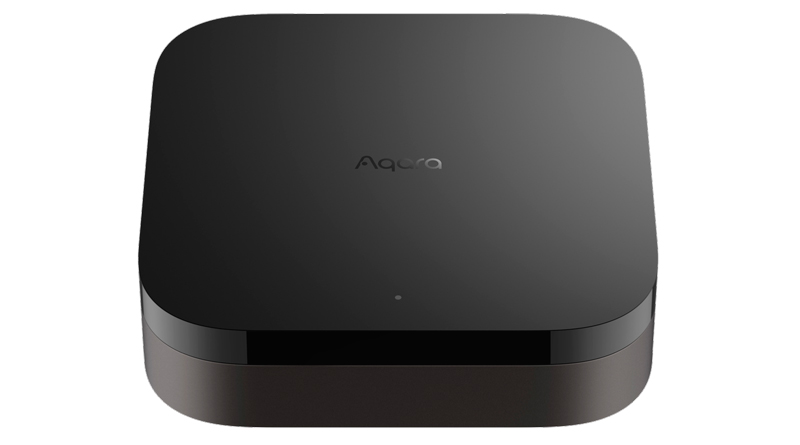
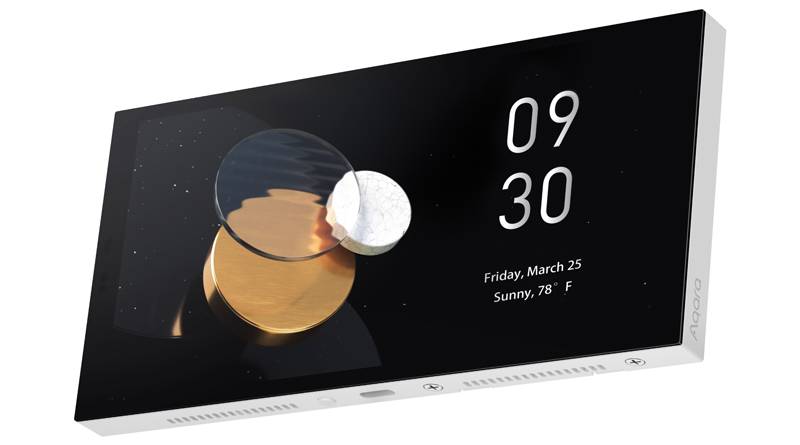
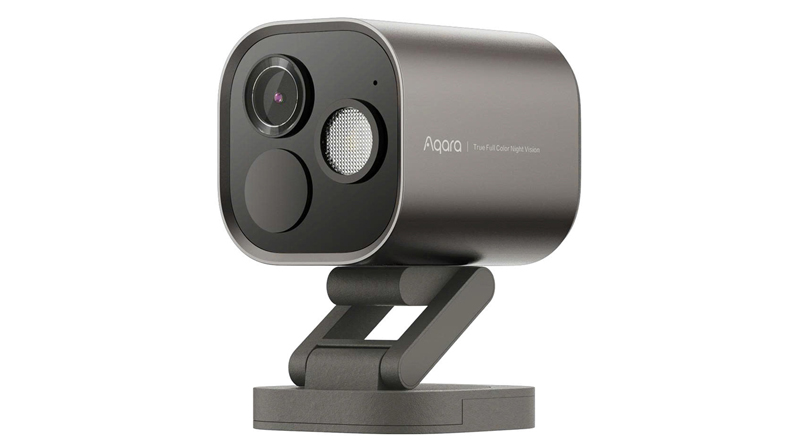

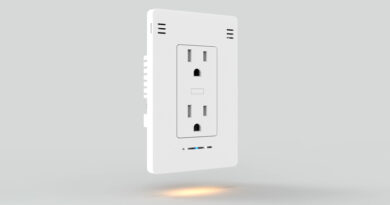
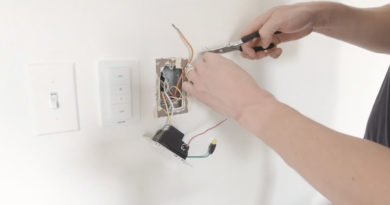
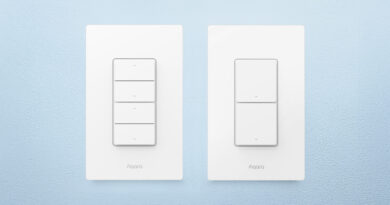
I tried to move all of my aqara switches from 1st Gen Aqara Hub to G2H Hub.
Aqara Wireless switches and Opple Wireless switches are immediately exposed to Homekit, but unfortunately wired Aqara switch with neutral is not exposed to Homekit. Very disappointing
I have Aqara wall switch without neutral and very disappointing it’s not exposed to HomeKit by G2H hub.
Is the G2H the US model? I’m sure they’ll add the switches at some point soon if it’s the US model. Possibly not if you’re using the Chinese model though.
The latest update for the G2H now supports the US wall switches and smart Plug.
Thank you, I can confirm that the G2H supports no-neutral wall switch in HomeKit now. As soon as I updated firmware, the switch was visible in the Home app.
Is this only the US version of the G2H that supports the US wall switches and smart Plug?
I have a Chinese version of the G2H, which I use in HomeKit-only mode (not signed into the Aqara app, not connected to any server (Chinese or US)), and I am wondering if it will support US wall switches and smart Plug and expose them to HomeKit?
Thank you very much for the help!
In theory you should be able to add the US switches to the Chinese hub, by manually adding them; 3 presses on the button on the top of the G2H puts it in pairing mode. From there, you add the switch as you would normally, usually pressing and holding a switch down until a blue LED starts to flash, I believe. I have not tested this myself, so I can’t guarantee it’ll work.
I can confirm that it supports the switches. My G2H camera is the Chinese version, and after the latest firmware update, it supports bothe the US and the Chinese switches.
Thanks for confirming!
Thank you Leonardo!
To confirm, are you on firmware 2.0.9 for the G2H camera (I can’t update further because I have it in HomeKit-only mode).
And is the switch you used the US Aqara Smart Wall Switch with Neutral, Single Rocker?
Thank you again for your help!
I’m actually on version 2.1.1_0002.0515. Version 2.09 did not expose the switches to HomeKit.
I did use the single rocker US version with neutral. But most of my switches (29 of them) are the Chinese version, with neutral. The latest version of the G2H firmware exposed them all to HomeKit, and it works flawlessly.
Hi again,
I am wondering which Chinese G2H firmware version is the minimum required to support the US Smart Plug? (2.0.9? 2.1.1?)
I am having trouble getting my new US Smart Plug paired with my setup :
-Chinese G2H in HomeKit-only mode (never connected to any server), firmware version 2.0.9
-US Smart Plug
I tried pairing them by first pressing the button three times on the G2H, and then holding down the button on the Smart Plug for 5 seconds. Unfortunately it doesn’t work, and the Smart Plug is not paired and does not show up in HomeKit (Home app on iPhone).
I am wondering if I need firmware 2.1.1 on my Chinese G2H? Unfortunately the firmware update is not currently available for the Chinese G2H if it is in HomeKit-only mode (a known bug that Aqara support have said they are working to resolve).
If someone has a Chinese G2H on firmware 2.0.9 in HomeKit-only mode and has successfully added the US Smart Plug, I would love to know how, because otherwise it might indicate a problem with my US Smart Plug hardware (received it today), and then I will return it to the seller.
Thank you!
I’ve had a similar experience as Ken’s and Vega’s. The first devices I’ve bought were the G2H and a couple of switches with neutral (everything from China). However, the switches were not exposed to HomeKit. Afterwards, I bought the M1S hub, and immediately everything was exposed to HomeKit. It was really worth buying the M1S. Since everything works perfectly now, I’ve decided to buy 29 switches and several sensors for my new home. I just hope that all this investment doesn’t go to waste once Thread devices start popping out.
I think Zigbee will be here for a long time to come, but even then it’s reported that updating Zigbee to work with Thread is not difficult.
I really can’t imagine it being difficult. However, I think it’s highly unlikely that Aqara or other manufacturers would bother with an update. It’s more profitable for them to launch new products, rendering previous ones obsolete.
Extremely disappointed in the Aqara Hub (US version). Was looking forward to integrating this into Home Assistant to use the lights and sounds in my alarm system. It installed easily into Home Assistant via Homekit. But only the light works, no sounds.
I’ve searched high and low across the internet. Everyone having the same issue, Lights are on but no sounds. Everyone says to upgrade to version 3 Gateway. Not going to do it. Version 3 has no lights and is a beeper. Worthless.
Going to return it on Monday. I hate I paid good money for a winky light with no sounds.
Hi have Mi smart gateway and the old aqara hub. When I try to add opple 6 buttons switch to Mi smart gateway it works but I can’t find it in homekit. When I add the same switch to the old aqara hub it appear in homekit.
I don’t understand why… I have other device connected to Mi smart gateway that appear in homekit like aqara temperature or dors sensor.
Do you know why?
Even though each hub that work with HomeKit has been certified, every child devices that goes through these hubs has to also be certified by Apple to be exposed to HomeKit. Even if a child device has already been certified to work with one hub, for every hub that it’s designed to work with, it has to be certified by Apple again. As the hub is by Xiaomi, but the button is Opple, it’s unclear who’s responsible for getting it certified. Either way, without certification for the relevant device going through a specific hub, it won’t be exposed to HomeKit. Opple and Aqara worked together on the switches and ceiling lights, so they ensured it the Opple devices would be exposed to HomeKit via the Aqara hub, but for each new Aqara hub (M1S, M2, P3 etc) the Opple switches will need to be certified all over again.
Eu gostaria de saber se nesse novo Aqara Hub M1S está dando a opção de acesso ao Hub alto-falante para acionar o alarme? Eu tenho o Aqara Hub de primeira geração, onde apesar de poder ligar ou desligar o alarme através da Apple Home, não consigo criar uma automação para acionar a saída de som pelo som do Hub.
Percebi que aqui nesta matéria, que você mostra que em alguns modelos de hubs tem a sincronização do alarme com o HomeKit e que em outro não. Sabe me dizer o que que realmente muda de um para o outro ?
Olá, o Aqara M1S dá a você acesso para controlar todos os quatro modos de alarme nos aplicativos Aqara e HomeKit, e eles sincronizam entre os dois aplicativos. você só pode escolher um dispositivo de disparo de alarme que funcione com o hub, então você não pode usar um sensor de movimento de outras empresas de HomeKit para acionar o alarme no M1S. você só pode usar sensores da marca Aqara ou Mijia para fazer isso. você também deve configurar o processo para os diferentes alarmes no aplicativo Aqara.
Hi, thank you very much for this extensive comparison, both the article and the video. However, maybe you could add “Bluetooth” to the comparison matrix with the six hubs. Although not always important, it does make a difference for some. There are a lot of interesting Bluetooth Xiaomi accessories that can communicate with the hub to store historical data, to synchronize for other reasons or to make the device available remotely.
Hi Dennis, the reason I left out Bluetooth in the comparison is that so far, only the Mi Smart Gateway offers this function actively (the M2 has Bluetooth but there are no devices so far), but none of the Bluetooth devices that work with the gateway are exposed to HomeKit. If this changes, I’ll definitely add this aspect.
HI,
Thank you for all this info!
I just recieved my Xiaomi V3 Gateway…. Early…… so I am waiting for several delivery of different devices such as the the 6 button Opple Wireless switch and several of a couple different bluetooth temp sensors…. and the V2 BT Nightlights…. and with I’m not confused on what will work with Homekit…. does adding a G2H or Aqara hub make difference on what can be exposed to Homekit?
Hi, there are probably more devices exposed to HomeKit via both the G2H and the Aqara hub, than via the Mi Smart Gateway. If you want to use the Aqara hub, that will work with Mi Home and Aqara home apps, but the G2H only works with Aqara home.
But Aqara Home works with both Hubs correct? I also have Homebridge and I know I can expose the Bluetooth Hygrometers to HK with that…But which hub/app will work the Opple switches? I just hate to buy another hub but if more devices are HK compatible without Homebridge it might be worth it….
You can’t add the Mi Smart Gateway to aqara home, only Mi Home. The Opple Switches will work with both Hubs, and are exposed to HomeKit via the Aqara hub. I’m not sure if the Opple switches are exposed to HomeKit via the Mi Smart Gateway.
Hi Simon I can confirm the Opple six button wireless switch will work with the V3 Gateway but doesn’t expose it to Homekit as it does with the Aqara hub.
Ok, thanks. When the Mi Smart Gateway first came out, the Opple Switches were not exposed to HomeKit, but I was hoping that would eventually have changed. Certification of these devices seems to be the responsibility of the manufacturer of the Child device, as opposed to the responsibility of the hub manufacturer then.
Thanks I’ll let u know when I receive the Opple switches if they work with the V3…then we’ll see if I need an Aqara hub….
I meant both hubs work with Mi home… LOL it gets confusing…
Yes, it’s hard to keep track of what works with which app, add what’s exposed to HomeKit.
HI! So I’m still waiting for my Opple switch.. but I got an Original Aqara hub and a few devices to play with in the meantime. SO I’m having issues with it…I added the Aqara hub to Mi home as thats where my V3 Xiaomi gateway and a few BT Temp/Humidity sensor I already have are…it took a couple tries to connect to Wifi…Asked to bind to HK and completed setup with the Light Ring and security showing in HK…. Then that’s it…. The Aqara hub shows in HK but is nowhere to be found in the Mi Home app…so I can’t add child devices to it…. I’m stuck… Even Though everything I have seems to connect to the Xiaomi gateway, I would still like to have the Aqara hub work.
Can you provide any advice or direction?
Thanks again for your help!
Hi Miles, sorry for the late reply. First questions I need to ask is which region is your hub (Chinese, EU, US) and which server is your Mi Home app set to?
No worries! Thank you the reply! From what I understand…. my Aqara Hub is US… my Mi home app is set to China Mainland. (Because my BT Sensors seems to only show on the Chinese server)
Actually I’ve been replying to your post on Facebook in the Aqara smart home group, so I think we covered a fair bit.
Simon? LOL I had no idea! I was reaching out on all channels so that’s hilarious! I just joined that group! Cheers!
Yes it’s frustrating as these are the only devices I currently own that I must rely on the Aqara hub for Homekit support …. and I do not like the fact that the Aqara hub hijacks the security status of Homekit and there is no way to way to disable or exclude it when using another security panel/alarm in Homekit. That all being said I see a firmware update available for for V3 Gateway that might change things however I am hesitant to update as I fear compatibility issues if I was to try something like Mi-connector in the future.
Will mijia gateway 3 (mi smart gateway) work with Aqara water leak & vibration sensors?
Thanks
Quick question. Can aqara hubs (or any zigbee gateway/hubs for this matter) interface to non-aqara but zigbee child devices? Or do the hubs/gateways should always be of the same brand of the child devices. Sorry, a newbie here. This actually confuses me. Thanks for the response, in advance!
Hi, Aqara hubs will only work with Aqara Zigbee child devices, although presently the exception to this is with some of the equivalent devices branded Mi or Mijia. There are many other Zigbee hubs that can work with all sorts of Zigbee devices from other brands, but they won’t be exposed to HomeKit. For example the Philips Hue bridge, which uses Zigbee, exposes Hue products to HomeKit, and even though it can work with a selection of other Zigbee brands, these devices won’t be exposed to HomeKit like the Hue products. I hope that helps, but if you need more info let me know.
Hi,
Excellent site you have.
Quick question. I bought a xiaomi light sensor and tried to add it to aqara M2 hub with your instrutions.
Hub prompted me a child device added but the light sensor isn’t showing in Aqara app. I’m connected to europe server.
Should I be connected to China server or what?
Thanks!
Hi, for some reason Aqara have made it more difficult to add some non-Aqara (Mijia) branded devices with the Zigbee 3.0 hubs. I tried adding the same light sensor to a few different Aqara Zigbee 3.0 hubs I have here, and the only one that worked is the Aqara G2H camera hub. It should still work with the M1 though. The region is not the issue here, as sensors are generally region-free.
Hi,
Do you know if one of those hub support the Nanoleaf Ivy bulbs? (they’re using zigbee 1.2 ha)
Thanks!
I believe I just replied to your question on Reddit! Sorry, the answer is no.
Hello there, I am new to home automation and really interested to utilise Aqara hub and devices such as the g2h, door sensor etc. My question is if i were to use Aqara devices only (which also support homekit), do i still need to buy the hub as i can access other child devices on Aqara app? I am confused on the need to have Aqara hub as it only support Aqara child devices.
Also, I am planning to use homekit app instead of Aqara app for home automation. I believe most Aqara devices support Homekit app. Please advise on my dilemma 🙁
If you want to only use HomeKit for automations with the Aqara sensors, that’s also not a problem.
Hi, you will always need an Aqara hub in order to expose them to HomeKit. Even if you don’t want to use HomeKit, just Aqara, you still need a hub. Zigbee devices from all manufacturers need a hub, and the Aqar hub is required for its own child devices, as well as being the means by which they are exposed to HomeKit. The good news is that the Aqara G2H camera is also a Zigbee hub that exposes the child devices to HomeKit.
Hi thank you for your helpful reply. Can we automate Aqara devices solely using Aqara app? or do i really need Aqara hub to combine all devices and automate?
From what i understood, the hub is useful when you’re away from home and you can access your devices from phone>internet>hub>Aqara devices. What if i only want to access and set automation at home, do i still need the hub?
Thank you for your prompt response btw. Really appreciate it. My brain is about to melt! Prolly overthinking it lol
Hi, you can create automations in both
HomeKit (the Home app) and the Aqara app, and as long as the automations don’t conflict with each other, you’ll have no issues. At its most basic, an Aqara hub is simply the means by which to let HomeKit see the Aqara child devices, but depending on the type of hub, you can do additional things – so the basic M1 and M1S hubs also have a night light that is exposed to HomeKit as a separate service/device which can be used in automations, whilst the M2 hub has a built-in IR blaster that can control devices that use an infrared remote control (it’s not exposed to HomeKit though). The Aqara P3 is a hub but also controls AC units, which can be exposed to HomeKit. With regards to accessing devices remotely when you’re not at home, you can do so with the Aqara app and devices via the hub, but if you want to control and see your all HomeKit devices remotely, you need an Apple Home Hub – Apple TV, HomePod, HomePod mini, or suitable iPad. A Home hub is super important because whilst you can control devices when you’re at home, you can’t create automations without one, and you can’t access HomeKit devices remotely either.
I guess i need multiple hubs then. I was actually planning to use Aqara child devices>Aqara hub>Aqara app>Apple homekit app (to automate cause who knows i will be adding more homekit devices such as eufy). I didnt think about how my phone can communicate remotely with aqara hub via homekit app. Also, I didn’t know i need homekit hub to automate on homekit app. I thought all my Aqara hub and devices would just show up on my homekit appThank you for the heads up!
As starter, do you think i could just work with Aqara hub, Aqara devices and echo show 10 for home automation via Aqara app? Will my home automation experience will be at loss if i use Aqara app instead of Apple homekit?
You can do fine with just the Aqara app, Aqara hub and child devices, but of course you can only add Aqara devices to the Aqara hub. As long as you have an international version of one of the hubs (ie not purchased from China) then they will work with Alexa and an Echo show, but I don’t have too much experience with Amazon’s platform.
Thank you so much kind sir!
Outstanding overview of the current range of Aqara Hubs.
If one had a second hub and wished to extend Aqara’s Zigbee signal into weak areas of a home – is it simply a matter of plugging in a second hub and adding it to the Aqara app? Or would this create a separate Zigbee network, to which one would need to add nearby child devices to?
Hi and thanks for the feedback. The simple answer to your question is that it doesn’t extend the Zigbee mesh network from your current hub, so you’re correct in the second assumption. If you do want to stick with one hub, but extend the network, then permanently powered devices like aqara smart plugs will do this, along with aqara snart switches, although only the ones with a neutral wire.
Hi – great article. I have the Aqara hub M1S and need to extend the range to reach sensors that are further away. I can’t find UK type Aqara smart plugs online, do they exist? If not, what other UK-compatible device could I use? I’m in Dubai, UAE.
Hi Richard, glad you found the article useful. Aqara smart plugs with the Type G (UK) pins don’t exist as far as I’m aware, even though Aqara sold the original Aqara hubs with a UK plug built-in. To extend the reach of your network, you’ve probably got three options, as well as a third option to use another hub like the E1, which is quite cheap. The first three options are to use either an Aqara smart bulb, an Aqara Smart Switch like the H1 (it has to be the version that uses neutral for use as an extender), or lastly, the Aqara relay T1, which also needs to be the one with neutral (even though there’s a no-neutral version). The E1 hub is probably your simplest solution, and although it doesn’t extend your network, you just need to connect the furthest sensors to that hub, and you can still use them together with other devices in the same account in the Aqara app or HomeKit.
Hi there,
I have Mi Smart Gateway which I’ve been using to check on my Xiaomi bluetooth devices remotely.
Seeing that it “supports” Aqara, I went on and got myself Aqara H1 Wall Switch (Double rocker, no neutral) and Aqara Wireless Remote Switch (Double rocker) — both EU versions (bought in NL). While I managed to add both devices to the Gateway (they show up under “Zigbee child devices” in the Xiaomi Home App), I can’t control them or map them onto anything (or see them in HomeKit).
I’m guessing that my only way forward is getting a separate Aqara hub in order to control these switches?
Trying to google any information on this is… murky at best, so hoping you have some feedback here!
Thanks in advance!
Hi, unfortunately whilst the Mi Smart Gateway is HomeKit compatible, and some of the devices that it can support are also exposed to HomeKit, it’s down to the hub manufacturer to get these child devices certified for HomeKit individually. As Aqara make the H1 switches, they’ve only certified them to be exposed to HomeKit via their own hubs, and so it’s unlikely they or Mijia will take on the responsibility for certifying then to be exposed to HomeKit. Your cheapest option is the new E1 hub.
Hei! Can you control those aqara devices with Xiaomi Home? I’m interested in buying some aqara devices too, but I don’t know if they can be controled with the Xiaomi Home app. I know for a fact that Google Home doesn’t control aqara devices (with some exceptions), so I decided to use the Xiaomi Home app instead.
Hi, the following devices will work with Mi Home – Aqara Hub M1, Aqara Hub M1S, Aqara Hub E1, Aqara P3, and Mi Smart Gateway. All other hubs will only work with the Aqara app and HomeKit etc.
This is an awesome summary of the very confusing xiaomi/aqara ecossystem!
Hopefully you can help me with something:
I have an CN Aqara Hub and live in Portugal. I want to extend the range of it, cause some of my sensors are always offline.
Knowing that powered devices would extend the mesh network, I thought about buying a Xiaomi Mi Smart Socket 2 Zigbee, but it will be an european version. Do you know if this would work with the CN hub and act as a range extender?
Or am I always locked to CN powered devices cause I have a CN gateway?
Thanks and keep up’ with the good job!
Hi, glad you found the article of some use. regarding extending the range of the Zigbee signal of your hub, using the EU type plug may work, but it does also depend on the hub you’re using and which app (Mi Home or Aqara Home). If you’re using the original Aqara hub (M1), then in either app, you should be able to add the plug, even though it won’t be listed (assuming your hub is connected to the Mainland China server in either app). You have two options – select the Chinese variant of the plug when deciding to add the device, and just proceed with adding the plug, as though it were the Chinese version. It should just add it anyway, but I can’t guarantee it will, even though this method generally works with sensors. The other option is to add the plug manually – press the button on your hub three times, to get it into pairing mode, then long-press the button on the plug, until a Blue LED flashes a few times. You should then hear the voice prompt on the hub state that it has been added successfully. Note that both methods may be less successful with the newer hubs that use Zigbee 3.0.
Thanks for this.
I have both a G2H and the M2 hub and thinking the best setup for this.
Should I put them as far away from each other meaning that I can blanket more of my home with Zigbee?
How does the alarm system work?
Would all sensors trigger the alarm, or only those that are linked to the M2 Hub?
Can I arm and unarm the alarm within the Home app or does it have to be done on the Aqara app>?
Finally if the M2 is connected via Ethernet, does it really make that much of a difference vs wifi, as it is only sensors?
Thank you once more!
Hi Alex
It depends on the size of your home and whether it covers more than one floor, but I think if you can have the M2 as central as possible to cover as many devices as it can reach, that will then allow the G2H to be placed wherever you think it’s most suitable when used as a camera, but placing them far apart to cover as much space as possible is good generally.
As regards the alarm, even if you use HomeKit, all devices that have an alarm system (Abode for example) can only use and be triggered by their own sensors. In the case of Aqara, all hubs connected to the same Aqara account on the same server will be triggered if they have all four alarm modes available. You can’t control which alarms are triggered, although you can set the alarm volume to zero on certain alarms if you don’t want to hear them. You can choose which sensors will trigger particular modes though, so for example, when you set the alarm to ‘Away’ you can set all sensors to act as alarm triggers (motion, contact, vibration etc.) whereas, if you set the alarm to sleep/night, you can just set the sensors that are used on the entrance and windows of your home, so any person within the home won’t trigger the alarm when a motion is detected, but if someone opens a window or door that leads outside, then you can use them as triggers.
As the M2 connects to its child devices via Zigbee, whether the M2 is connected via ethernet or wifi should make no difference to the speed at which devices connect and trigger the M2. The only difference is that you tend to have a more stable connection, with less potential interference on the 2.4GHz wireless band, as it’s not being used. It also means one less device using up WiFi resources.
Does new Aqara sensors (windows, doors,…) work with the Xiaomi Zigbee gateway v3.0? I have 2 Xiaomi smart devices binded to Chinese server and want to build a home security system that can connect to them and new sensors. Thanks a lot for any help.
Hi, which Aqara sensors do you mean? The Aqara P1 Sensor contact and motion sensors aren’t compatible with Mi Home at all, so this means they won’t work with the Mi Smart Gateway 3 either. the E1 Aqara sensors will be compatible with Mi Home, and should also work with the Mi Gateway, although it’s almost guaranteed they won’t be exposed to HomeKit if that’s something you use.
Thank you very much for your quick response and useful information. I meant the Aqara door&window sensor and vibration sensor.